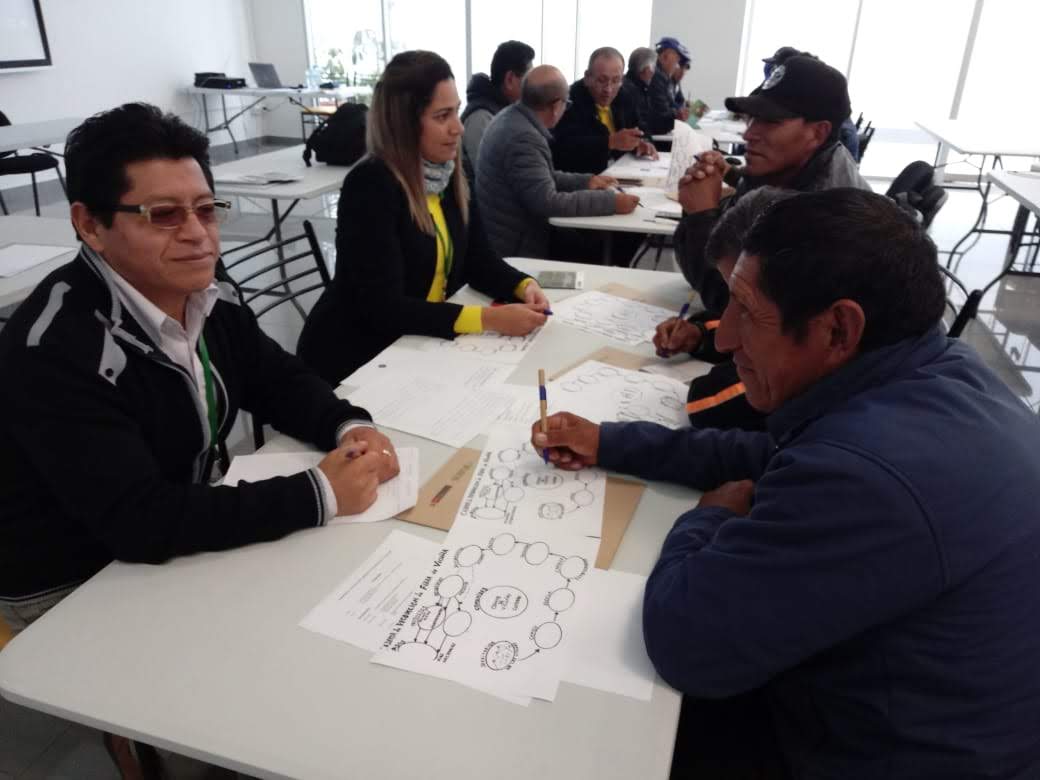

As part of this component, a participatory diagnosis of the Tomas Community was carried out, using participatory tools in workshops and field visits, which integrated local knowledge with that of external researchers in agrostology, hydrology, archeology and social sciences. After evaluating several possibilities, the diagnosis culminated in the selection and design of the EbA measure, prioritizing work with vicuñas, which the community had begun to work with on a small scale in the 2000s. These activities contributed to the consolidation of the Community Board of Directors and the Vicuña Committee, a 6-member organization that is part of the Tomas Community and is in charge of organizing all activities related to the management of the vicuñas that the community raises in semi-captivity.
The project team provided training on sustainable management of vicuñas, pastures and water, as well as procedures for organizing the Chaku (ancestral technique for capturing and shearing vicuñas), disease management and sanitary treatment. Training was also provided on the vicuña law and the procedures and legal requirements for selling vicuña fiber, due to its status as a nationally protected species.
- Willingness and commitment of the members of the Vicuña Committee.
- Local knowledge of vicuña management.
- Good participatory work plan, validated in community assembly.
- Exchange of knowledge among communities.
- Permanent support from the team of facilitators and external researchers.
- In order to prepare the diagnosis, it is essential to incorporate local perspectives and knowledge from the diagnosis and throughout the training process.
- Promote spaces for capacity building and exchange in the field, and limit classroom workshops, since the community members are not used to these dynamics.
- It is positive to have spaces for reflection to review and adjust the work plan.
- Weak coordination between entities involved in vicuña management may hinder the progress of the measure.